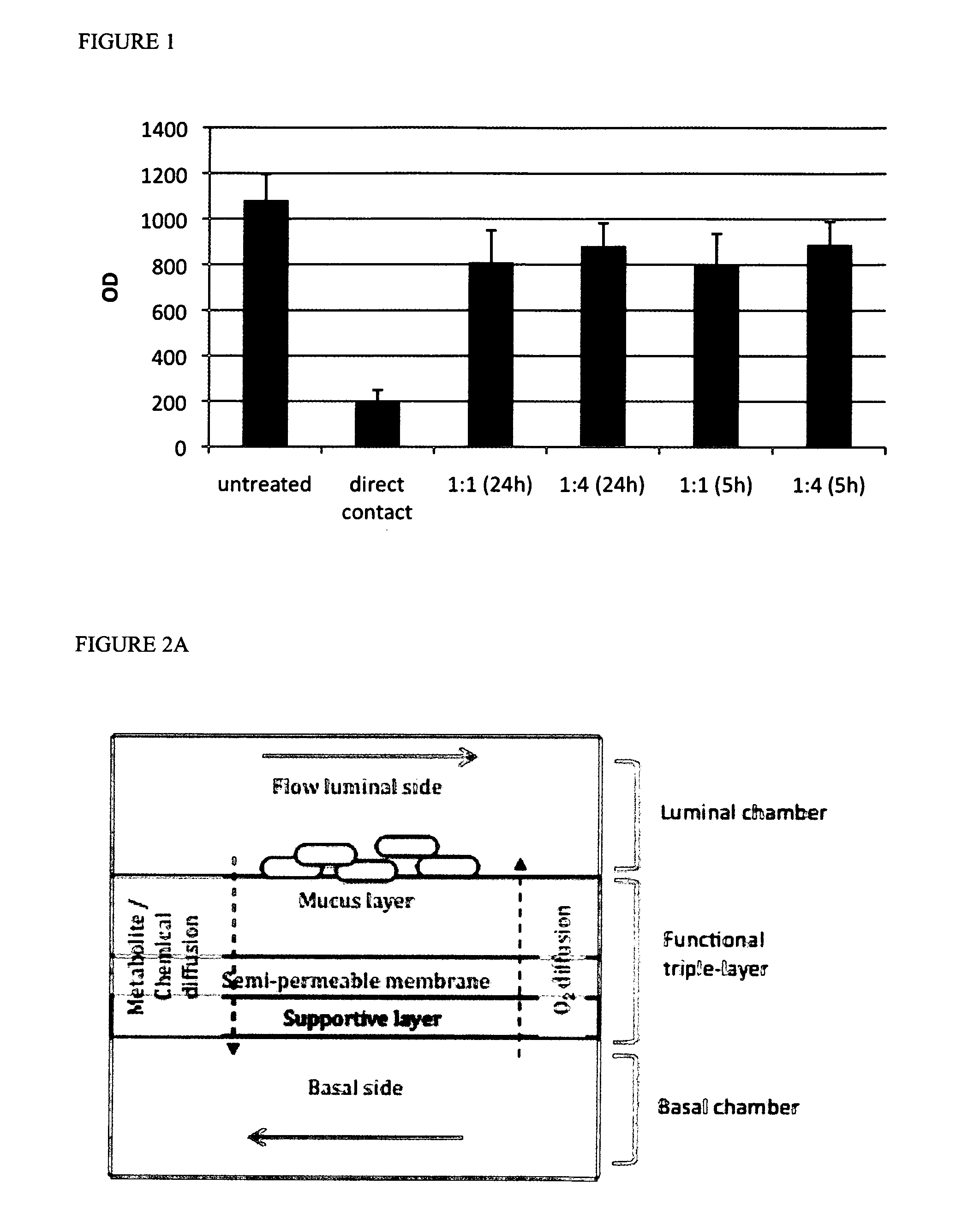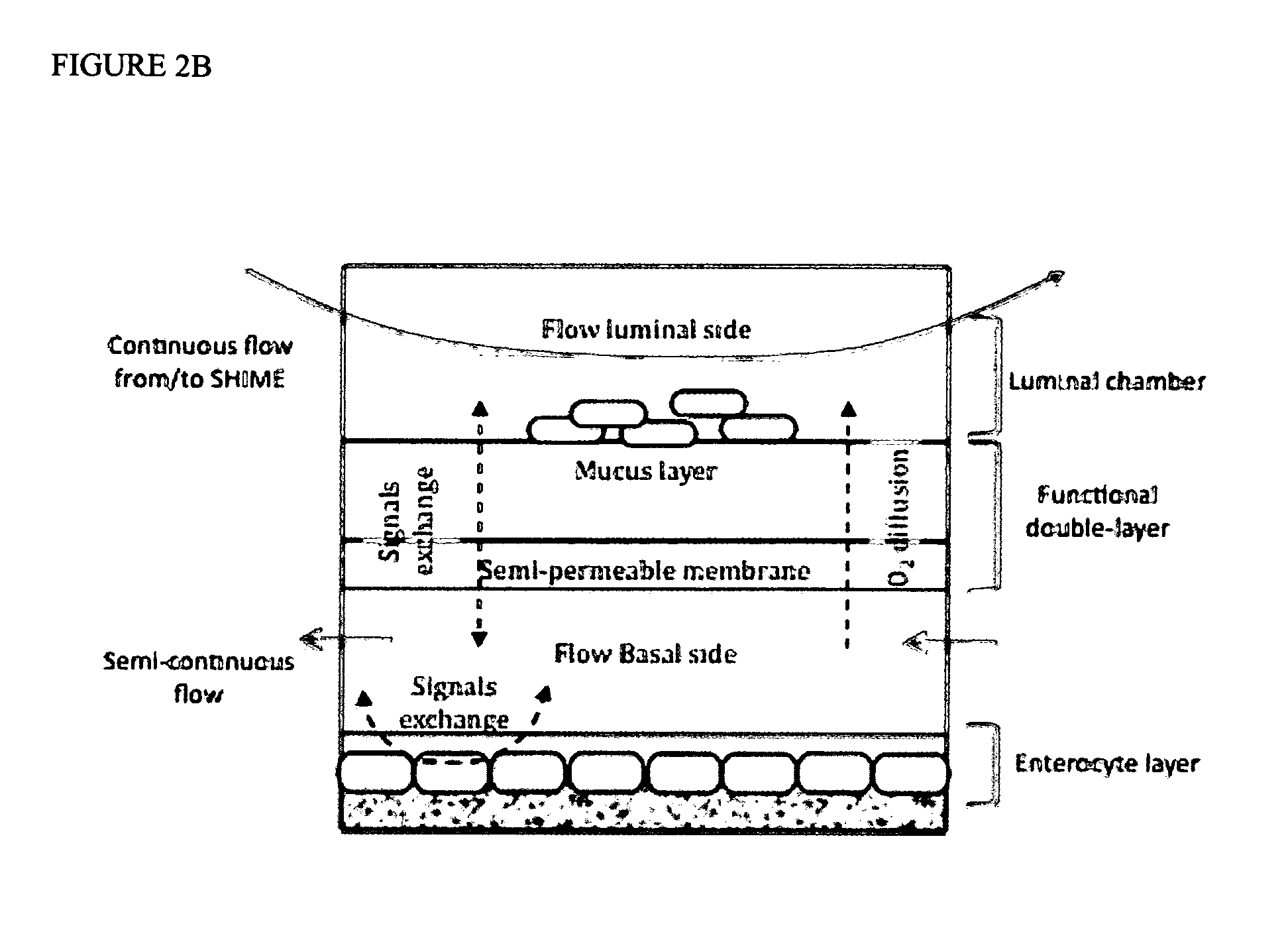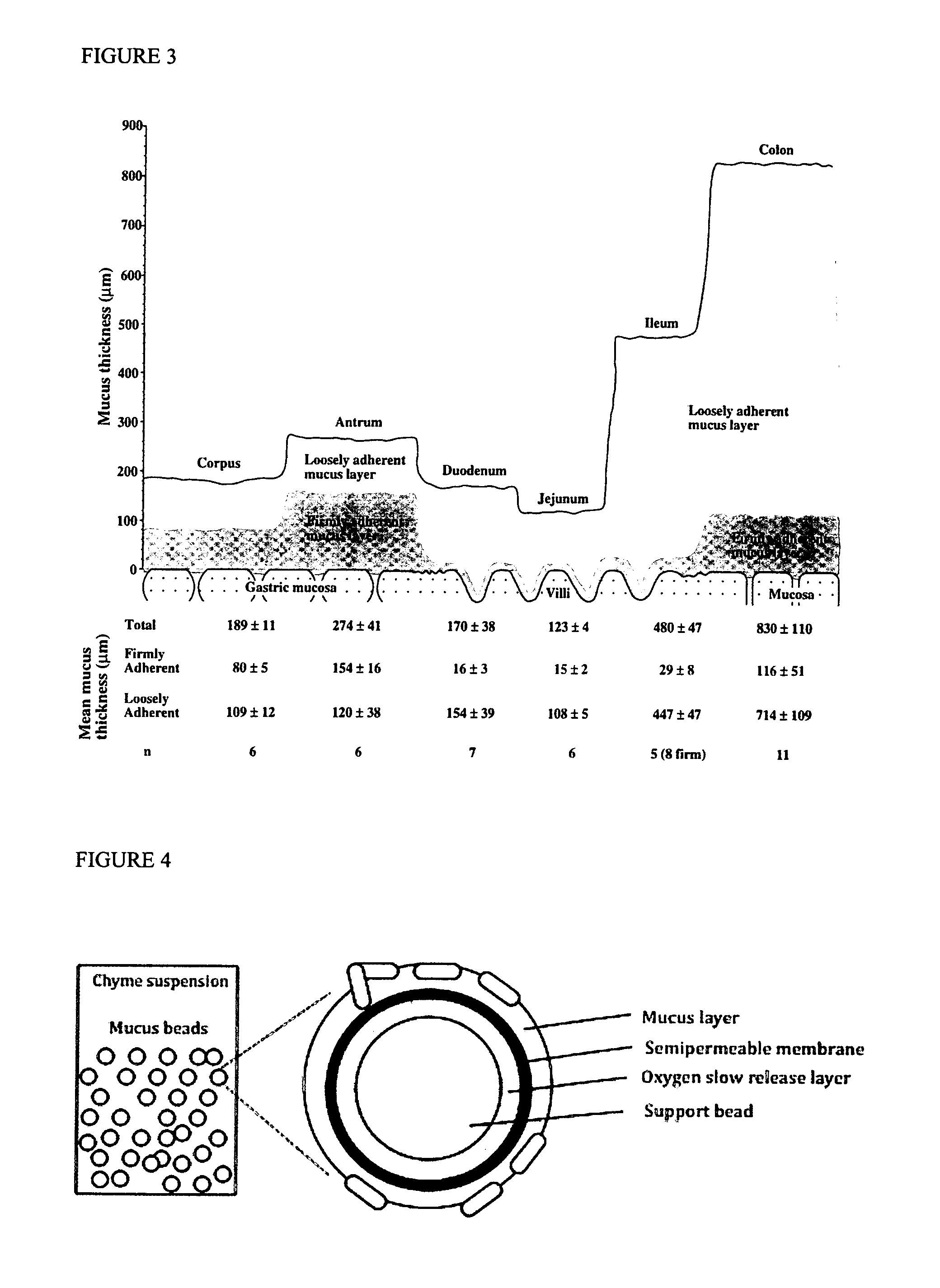Technology and method to study microbial growth and adhesion to host-related surfaces and the host-microbiota interactions
a technology of host-related surfaces and microbial growth, applied in the field of microbial growth and adhesion to host-related surfaces and the interaction of host microorganisms, can solve the problems of limiting the experimental time to 2 hours maximum, time-consuming cell culture growth, and inability to perform high-throughput screening
- Summary
- Abstract
- Description
- Claims
- Application Information
AI Technical Summary
Problems solved by technology
Method used
Image
Examples
Embodiment Construction
[0062]The adhesion module of the present invention comprises 2 compartments separated by a semi-permeable membrane; said membrane having an artificial mucus layer applied on its luminal side; and said module being characterized by having anaerobic conditions at its luminal side and aerobic conditions at its basal side.
[0063]With the term “module” or “adhesion module” is meant an excipient (e.g. a vessel or a container) wherein the environmental conditions of a mucosal layer are mimicked.
[0064]The combination of the mucus layer and the semi-permeable membrane, for dividing the adhesion module in 2 compartments, is hereinafter also referred to as the functional layer. Said functional layer can be a double, triple or multi-layer, but consists of at least two layers wherein the first layer, i.e. the top layer or the layer in direct contact with the luminal compartment, is the artificial mucus layer and the second layer is the semi-permeable membrane. With the term “luminal compartment” ...
PUM
| Property | Measurement | Unit |
|---|---|---|
| thickness | aaaaa | aaaaa |
| partial oxygen pressure | aaaaa | aaaaa |
| partial oxygen pressure | aaaaa | aaaaa |
Abstract
Description
Claims
Application Information
 Login to View More
Login to View More - R&D
- Intellectual Property
- Life Sciences
- Materials
- Tech Scout
- Unparalleled Data Quality
- Higher Quality Content
- 60% Fewer Hallucinations
Browse by: Latest US Patents, China's latest patents, Technical Efficacy Thesaurus, Application Domain, Technology Topic, Popular Technical Reports.
© 2025 PatSnap. All rights reserved.Legal|Privacy policy|Modern Slavery Act Transparency Statement|Sitemap|About US| Contact US: help@patsnap.com



